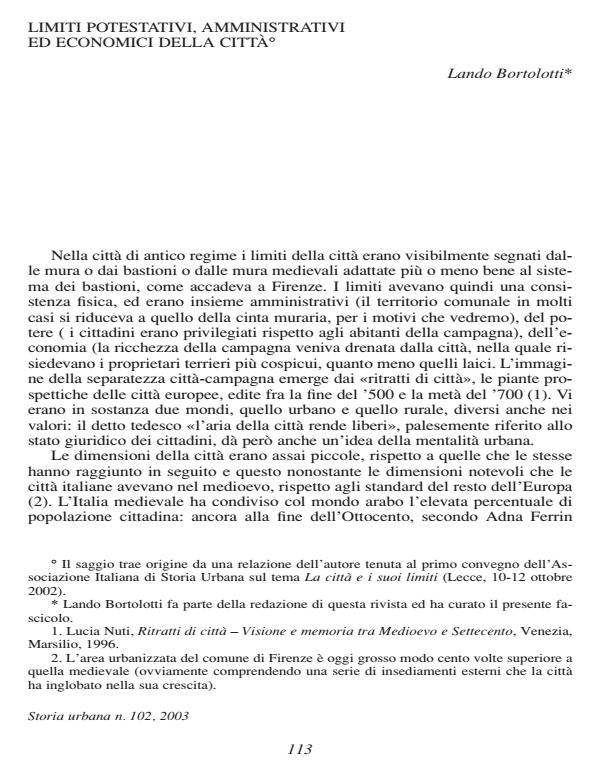Limiti potestativi, amministrativi ed economici della città
Journal title STORIA URBANA
Author/s Lando Bortolotti
Publishing Year 1994 Issue 2003/102 Language Italian
Pages 14 P. File size 63 KB
DOI
DOI is like a bar code for intellectual property: to have more infomation
click here
Below, you can see the article first page
If you want to buy this article in PDF format, you can do it, following the instructions to buy download credits

FrancoAngeli is member of Publishers International Linking Association, Inc (PILA), a not-for-profit association which run the CrossRef service enabling links to and from online scholarly content.
The pre-industrial towns were surrounded by walls: the administration and power boundaries generally coincided. Only the economic boundaries exceeded the walls. The opposition town-countryside was clear-cut. The towns belonging to the net-like system (according to the definition by P.M. Hohenberg and L.H. Lees) was not the rule, but the exception. In our times the oldest opposition town-countryside is growing weaker. The town boundaries, likewise the districts’ and regions’, are losing the old meaning. The public utilities like health, education, water supply, public transport and so on are more and more overcoming the administration boundaries. Thanks to the spread of information, today every town can have world wide connections, thus belonging to the global system of towns. So life is no longer local because it develops in a manifold space. In Italy a great difficulty is represented by the inadequate size of the town hall which is, however, the only public body people rely on.
Lando Bortolotti, Limiti potestativi, amministrativi ed economici della città in "STORIA URBANA " 102/2003, pp , DOI: